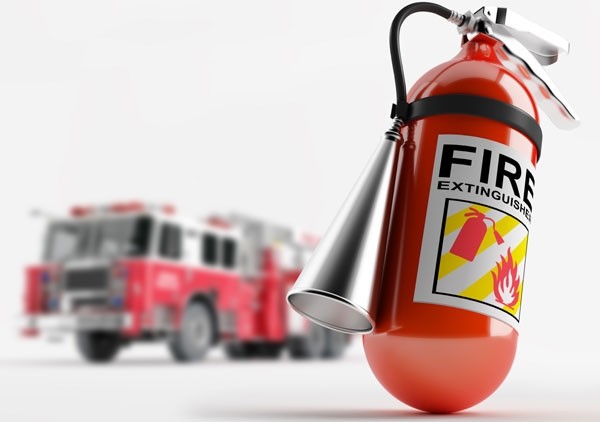Office Fire Safety Checklist

Fire prevention is as important in the office as it is in the factory or machine shop. Anyone who has ever worked in a high-rise building or above a manufacturing business that uses combustible materials knows that evacuation can be difficult in the event of a fire. Taking steps to prevent fires in the first place is your best bet.
Fire Prevention
Limit the storage of combustible materials. If you're unsure about the chemical makeup of that new office cleaner the janitors are using or the cases of copier ink you have under the stairwell, check the Material Safety Data Sheet (MSDS) for any potentially combustible material (see Resources).
Don't overload electrical outlets. Workers have a tendency to plug too many cords in power strips and surge protectors or to connect two or more power strips to allow up to a dozen or so electronic devices to be plugged into a single outlet. The heat generated by too many copiers, computers, printers, coffee makers, cell phone chargers and adding machines can start an electrical fire inside office walls that might go undetected for hours.
Develop an office policy on open flames. Candles and incense may create a soothing atmosphere or eliminate unpleasant odors, but they can easily lead to an office fire. Develop a clear policy regarding candles or other open flame and be willing to enforce it.
Avoid space heaters. Placed too close to that mountain of paperwork under your desk or plugged into a frayed extension cord, space heaters can quickly ignite and send your office into flames. A better strategy is to properly regulate your heating and air conditioning, helping keep employees comfortable and possibly saving money on utilities at the same time.
Emergency Response
Have a sufficient number of fire extinguishers on hand and train employees how to use them. ABC-rated fire extinguishers, available at home-improvement centers and office-supply stores, provide the best protection against the most common types of fires in offices.
Keep doors and windows clear of storage. Fire codes specify that if it looks like a door, treat it like a door. Do not block exits with boxes, copy machines or office supplies, and clearly mark all exits with fire-rated signs that light up in the dark or when the power goes off.
Have an office-evacuation plan, including two available evacuation routes, and make sure it's posted conspicuously throughout the work place. Practice your evacuation plan once a month, reminding employees that office safety is a company priority. Finally, have a designated meeting place outside the office and a require employees to check in immediately so you can notify firefighters if anyone is missing.
Fire Prevention
Limit the storage of combustible materials. If you're unsure about the chemical makeup of that new office cleaner the janitors are using or the cases of copier ink you have under the stairwell, check the Material Safety Data Sheet (MSDS) for any potentially combustible material (see Resources).
Don't overload electrical outlets. Workers have a tendency to plug too many cords in power strips and surge protectors or to connect two or more power strips to allow up to a dozen or so electronic devices to be plugged into a single outlet. The heat generated by too many copiers, computers, printers, coffee makers, cell phone chargers and adding machines can start an electrical fire inside office walls that might go undetected for hours.
Develop an office policy on open flames. Candles and incense may create a soothing atmosphere or eliminate unpleasant odors, but they can easily lead to an office fire. Develop a clear policy regarding candles or other open flame and be willing to enforce it.
Avoid space heaters. Placed too close to that mountain of paperwork under your desk or plugged into a frayed extension cord, space heaters can quickly ignite and send your office into flames. A better strategy is to properly regulate your heating and air conditioning, helping keep employees comfortable and possibly saving money on utilities at the same time.
Emergency Response
Have a sufficient number of fire extinguishers on hand and train employees how to use them. ABC-rated fire extinguishers, available at home-improvement centers and office-supply stores, provide the best protection against the most common types of fires in offices.
Keep doors and windows clear of storage. Fire codes specify that if it looks like a door, treat it like a door. Do not block exits with boxes, copy machines or office supplies, and clearly mark all exits with fire-rated signs that light up in the dark or when the power goes off.
Have an office-evacuation plan, including two available evacuation routes, and make sure it's posted conspicuously throughout the work place. Practice your evacuation plan once a month, reminding employees that office safety is a company priority. Finally, have a designated meeting place outside the office and a require employees to check in immediately so you can notify firefighters if anyone is missing.
- r377f794532bc54920f4d064eeffba5469.jpg